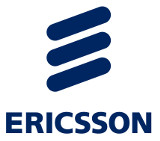Telstra deploys Ericsson LTE Broadcast to enable video-centric applications
Sunday, March 1st, 2015
Telstra and Ericsson announce they will enable full production LTE-Broadcast capability on Telstra’s 4GX in May 2015
- Telstra and Ericsson demonstrate LTE Broadcast transmission using High-Efficiency Video Coding (HEVC)
Ericsson (NASDAQ: ERIC) and Telstra continue to lead mobile operators in the adoption of LTE Broadcast. The technology is attracting growing industry traction as a method for making the best use of existing network resources and available spectrum to deliver new video services and offload network.
Following a series of successful trials in 2014, Telstra will deploy Ericsson’s LTE Broadcast end-to-end solution on their Australian 4GX network. With this capability in place Telstra will be progressively enabling permanent LTE Broadcast channels at key venues and major events, initially for testing and then for customer access on compatible devices during 2015.
The LTE Broadcast trials run by Telstra and Ericsson in Australia have shown that three or four channels of video can be efficiently streamed along with complementary data channels. This traffic used as little as 10% of the 20 MHz carrier to cover all users. The adoption of High-Efficiency Video Coding (HEVC) compression further improves network efficiency and potential picture quality.
Mike Wright, Telstra Group Managing Director Networks, says: “We have completed a number of successful LTE Broadcast trials and seen firsthand the benefits to our network and how it enhances the delivery of high quality content during large scale events. We are now excited about the possibilities it will provide once the capability is deployed across our network.”
In late February 2015, Ericsson and Telstra demonstrated LTE Broadcast transmission using HEVC encoders. HEVC encoding reduces the bandwidth required to deliver high quality video by around 30-40%, compared with existing MPEG-4 AVC coding, enabling operators to either deliver higher quality video or more channels in the same spectrum.
LTE Broadcast has a number of potential key use cases including new customer content experiences at sporting events, such as tennis, cricket, horse racing, car racing and other special events. Using the technology, event goers will be able to access multiple high quality video streams and event related data.
Håkan Eriksson, Head of Ericsson Australia, New Zealand and Fiji says: “Operators are selecting LTE Broadcast for its efficient spectrum use, chipset support in many smartphones and the potential to develop and deliver new personalized media services to consumers and upstream media and industry customers. In addition to delivering high quality video, LTE Broadcast can also be used to deliver personalized media content, such as digital advertising, digital newspaper updates and operating system updates.”
Without LTE Broadcast technology, delivery of the video and data streams would have been via unicast, consuming significantly more spectrum and network resources. Delivery via LTE Broadcast will deliver an enhanced quality of experience to a higher number of subscribers than when served via unicast delivery.
At MWC Ericsson is demonstrating a number of use cases, including: Public Safety Mission Critical Push to Talk service, Software/File downloads and LTE Broadcast to Set-Top Box. New functionality, such as Dynamic Switching between unicast and broadcast, and growing ecosystem of commercial devices, dongles, are also showcased.
Latest News
- Barb to start reporting TV-set viewing of YouTube channels
- SAT FILM selects multi-DRM from CryptoGuard
- Qvest and ARABSAT to launch OTT streaming platform
- ArabyAds & LG Ad Solutions partner with TVekstra in Turkey
- Freeview NZ satellite TV service to move to Koreasat 6
- Comscore expands YouTube CTV measurement internationally
